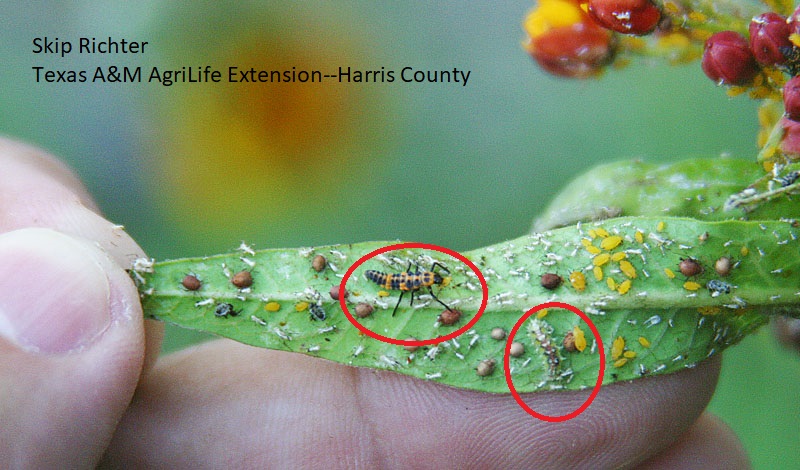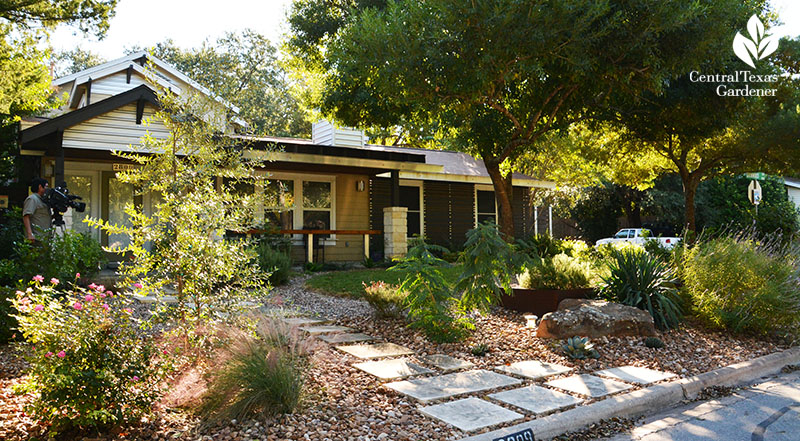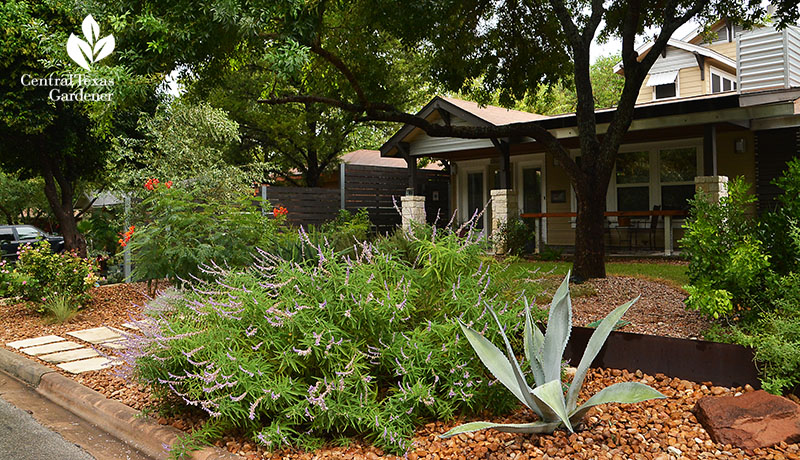May 30, 2019
Yellowing Leaves + Insects to Love with Skip Richter
Do your plants have leaves that look like my satsuma orange?

Roses are showing the same symptoms at the Travis County Extension demonstration garden.

This is iron chlorosis, quite common in our alkaline soils. Daphne explains that as recent rains percolated through the soil, so did soluble minerals, washing essential plant nutrients below the root zone. Native plants are more adapted, but hardy tropicals can suffer, like Duranta erecta.

Iron chlorosis manifests in NEW leaves with green veins on yellowing leaves. Nitrogen chlorosis can look similar or the whole leaf can be yellow but occurs on OLD leaves. You can dose with soluble products that contain iron, nitrogen and other minerals. Get Daphne’s answer now!

Those of us on alkaline soil struggle with hydrangeas, though I get success stories now and then! But in Carrollton, Monica and Darrell Miller are on their 4th year with their container-grown beauty on a shady patio.

Theirs is ‘Summer Crush’ Endless Summer® that’s bloomed prolifically for them every summer, even during the hottest of times.
Well, last May, wholesale growers Bailey Nurseries sent me two ‘Summer Crush’ Endless Summer® hydrangeas to test. They arrived when the thermometer topped 100°, and I figured they were goners. Ah, no! They bloomed and thrived on my morning sun patio. I protected in winter, but supposedly they’re hardy to Zone 4.

In spring, I got them official containers, potted up in new soil, and they took off again!

After the rain and warmth, insects are having a field day, so to speak. But we’ve got lots of friends out there, like this assassin bug feeding on a caterpillar.

As a Texas A&M AgriLife Extension Horticulturist, Skip Richter’s always on the lookout for fascinating, integral insect relationships. Once serving Travis County, and a regular on CTG, he headed to Harris County, so we’re thrilled to welcome him back this week.

Always, Skip champions taking time to observe and learn as the best defense against pests. One of his mantras: “The best pest control is your own shadow.”
That embraces welcoming the beneficials that handle things quite efficiently when you’re not around. Two of your many friends are ladybug (lady beetle) and green lacewing larvae that look nothing like their grown-up selves. They do the heavy lifting scarfing up plant-sucking aphids. In this picture, Skip even got the brown aphids—parasitized by egg-laying small wasps.

Female adult ladybugs lay their eggs when a reliable food source is nearby (like aphids).

This delicate intricacy is an egg laid by a green lacewing.

Before reaching for a pesticide, ask yourself if it’s really worth it to wipe out your friends along with the enemies. I’m totally impressed with this shot that Skip nabbed of a hoverfly (syrphid fly) on a roadside flower. They’re very small, so easy to miss on garden plants. Not only do they pollinate flowers, they lay eggs where the emerging larva can fill up on aphids.

Follow Skip on Instagram @skiprichter for cool stuff and witty insights. And, WATCH his inspiring interview and neato trick for getting macro shots with your phone.
On tour: After living in Santa Fe, Kathy Lund wanted a water-thrifty garden when she moved to Austin and renovated a 1960s home. Long hours as a veterinarian called for low care plants that didn’t demand lots of spare time.

Friend and former husband Richard Lund of Grupo Pacific in Carlsbad, California styled the exterior’s facelift with slatted panels. James Mack, of Jemco, executed precise construction.

They also teamed up to design and build slatted privacy fences anchored with stainless steel.

The side fence encloses a small courtyard patio.

Landscape designer Bud Twilley created walk-around paths that control flooding near the house.

He also turned Plain Jane flat into terraced levels that slow down rainwater runoff and prevent erosion on the sloping grade. A swath of Zoysia grass softens the upper terrace.

He revamped the entrance walkway with offset limestone pads for a meandering pathway to the front instead of a straight shot from the street. Gravel tempers rainfall on the slope to let it slowly sink in. Bud used smaller rainbow gravel near the house.


At the curb, he used larger gravel along the street to deter dogs, while oft-seasonal sensations attract lots of wildlife to enjoy from the front porch. Raised steel beds contribute to the look, but also as a stopgap to rushing water.

Watch now!
Thanks for stopping by! See you next week, Linda

